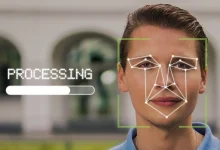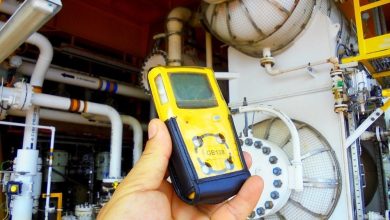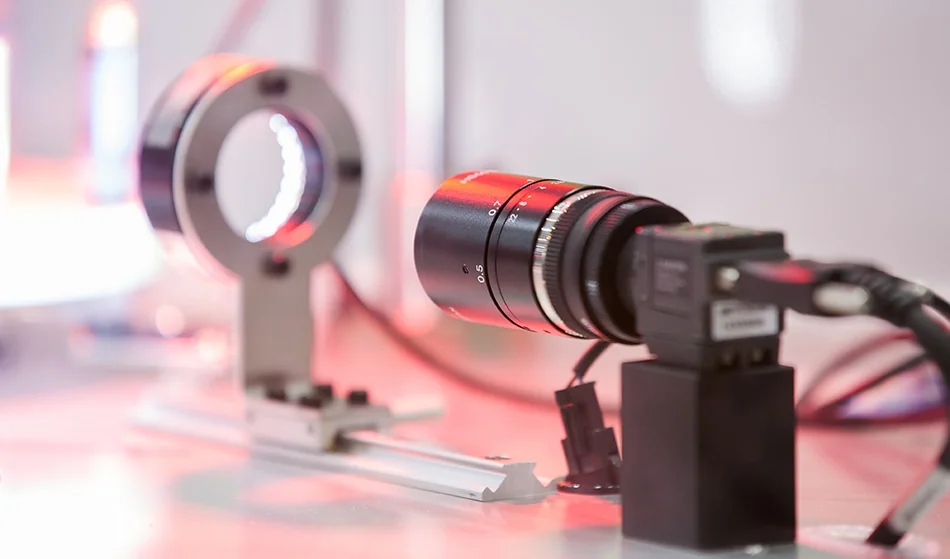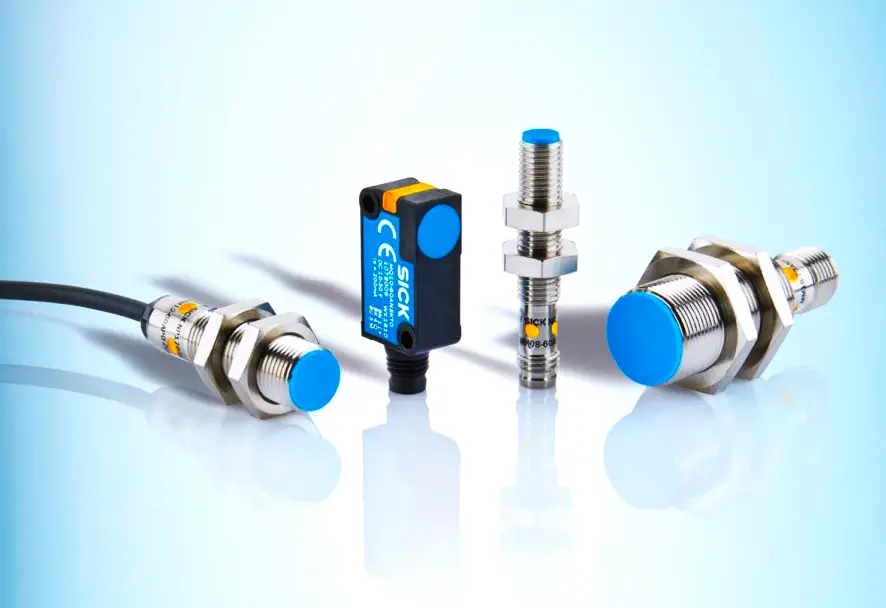Types of Force and Tactile Sensors:

- Force and Tactile Sensors:
Force and tactile sensors measure the forces exerted on the robot’s body or end effector during interactions with objects or surfaces. These sensors provide feedback about contact forces, pressure distribution, and object properties, enabling robots to grasp objects with the right amount of force, detect surface textures, and perform tasks requiring delicate manipulation and interaction.
Force and Tactile Sensors in Robotics: The Sense of Touch in the Robotic Realm
In the intricate world of robotics, where interaction with the environment and objects demands finesse and precision, force and tactile sensors emerge as the silent observers, bestowing robots with the invaluable sense of touch. These sensors, akin to the tactile receptors in human skin, enable robots to perceive and respond to physical forces, pressures, and vibrations, thus facilitating delicate manipulation, object detection, and interaction with the world around them. Join us on an immersive exploration of force and tactile sensors, uncovering their types, functionalities, and transformative role in shaping the realm of robotics.

Types of Force and Tactile Sensors:
- Strain Gauge Sensors:
Strain gauge sensors measure changes in electrical resistance caused by deformation or strain. These sensors are typically composed of thin metallic foils arranged in a Wheatstone bridge configuration. When subjected to mechanical force or pressure, the resistance of the strain gauge changes proportionally, allowing precise measurement of the applied force or pressure. Strain gauge sensors find applications in robotics for tasks such as force feedback control, tactile sensing, and robotic grippers.
Strain Gauge Sensors in Robotics: Bridging Precision and Perception
In the intricate realm of robotics, where precision and perception are paramount, strain gauge sensors stand as the silent sentinels, facilitating the delicate dance of interaction between robots and their environment. These sensors, capable of measuring minute deformations and strains, empower robots with the ability to perceive and respond to mechanical forces, pressures, and vibrations with unparalleled accuracy. Join us on an immersive exploration of strain gauge sensors, uncovering their principles, applications, and transformative role in shaping the landscape of robotics.
Principles of Strain Gauge Sensors:
Strain gauge sensors operate on the principle of electrical resistance change in response to mechanical deformation or strain. They consist of thin metallic foils or wires arranged in a Wheatstone bridge configuration. When subjected to mechanical stress or strain, such as bending, stretching, or compression, the resistance of the strain gauge changes proportionally.
This change in resistance is typically measured using a Wheatstone bridge circuit, where the strain gauge is connected in one of the bridge arms. By applying a constant voltage across the bridge and measuring the voltage difference between the output terminals, the change in resistance of the strain gauge can be determined. This change in resistance is directly proportional to the mechanical strain experienced by the sensor, allowing precise measurement of applied forces, pressures, or deformations.
Types of Strain Gauge Sensors:
- Bonded Foil Strain Gauges
Bonded foil strain gauges consist of a thin metallic foil, usually made of materials such as constantan or Karma, bonded to a flexible backing material. When subjected to mechanical strain, the foil undergoes deformation, causing changes in its electrical resistance. Bonded foil strain gauges are widely used in robotics for applications such as force sensing, load measurement, and structural health monitoring.
- Wire Strain Gauges:
Wire strain gauges consist of a fine wire, typically made of materials such as constantan or platinum, wound in a grid pattern on a flexible substrate. When subjected to mechanical strain, the wire experiences elongation or compression, resulting in changes in its electrical resistance. Wire strain gauges offer high sensitivity and are often used in robotics for applications requiring precise force or pressure measurement.
- Semiconductor Strain Gauges:
Semiconductor strain gauges utilize the piezoresistive effect in semiconductor materials to measure mechanical strain. These sensors contain doped semiconductor materials, such as silicon or germanium, whose electrical resistance changes in response to mechanical deformation. Semiconductor strain gauges offer advantages such as high sensitivity, temperature stability, and resistance to environmental factors, making them suitable for demanding robotics applications.
- Thin Film Strain Gauges:
Thin film strain gauges consist of a thin layer of resistive material deposited onto a flexible substrate using techniques such as sputtering or evaporation. When subjected to mechanical strain, the thin film undergoes deformation, causing changes in its electrical resistance. Thin film strain gauges offer advantages such as high sensitivity, low thermal mass, and compatibility with various substrates, making them suitable for integration into robotic structures and components.
Applications of Strain Gauge Sensors in Robotics:
- Force Sensing and Feedback Control:
Strain gauge sensors enable robots to sense and measure applied forces or loads during interaction with objects or the environment. By integrating strain gauges into robotic grippers, manipulators, or end-effectors, robots can adjust their grasp force, monitor object slippage, and ensure precise manipulation and handling of objects with varying shapes, sizes, and surface properties. Force sensing and feedback control functionalities are crucial for tasks such as pick-and-place, assembly, and material handling in robotics applications.
- Load Measurement and Structural Health Monitoring:
Strain gauge sensors are used in robotics for load measurement and structural health monitoring of robotic components and structures. By embedding strain gauges into robotic joints, links, or frames, robots can monitor mechanical stresses and strains experienced during operation, detect structural anomalies or defects, and perform real-time health monitoring and diagnostics. Load measurement and structural health monitoring functionalities are essential for ensuring the safety, reliability, and longevity of robotic systems in various applications.
- Tactile Sensing and Object Recognition:
Strain gauge sensors enable robots to perceive and recognize tactile information during interaction with objects or surfaces. By embedding strain gauges into tactile sensing arrays or skins, robots can detect and measure forces, pressures, or deformations applied to their surfaces, enabling them to perceive the shape, texture, and compliance of objects in contact. Tactile sensing and object recognition functionalities are crucial for tasks such as object manipulation, grasping, and haptic feedback in robotics applications.
- Biomechanical Studies and Human-Robot Interaction:
Strain gauge sensors are used in robotics for biomechanical studies and human-robot interaction research. By integrating strain gauges into robotic prostheses, exoskeletons, or wearable devices, researchers can measure and analyze the mechanical forces and strains experienced by human users during movement or physical activities. Biomechanical studies and human-robot interaction functionalities are essential for understanding human biomechanics, enhancing assistive robotics, and developing advanced robotic technologies for healthcare, rehabilitation, and sports science applications.
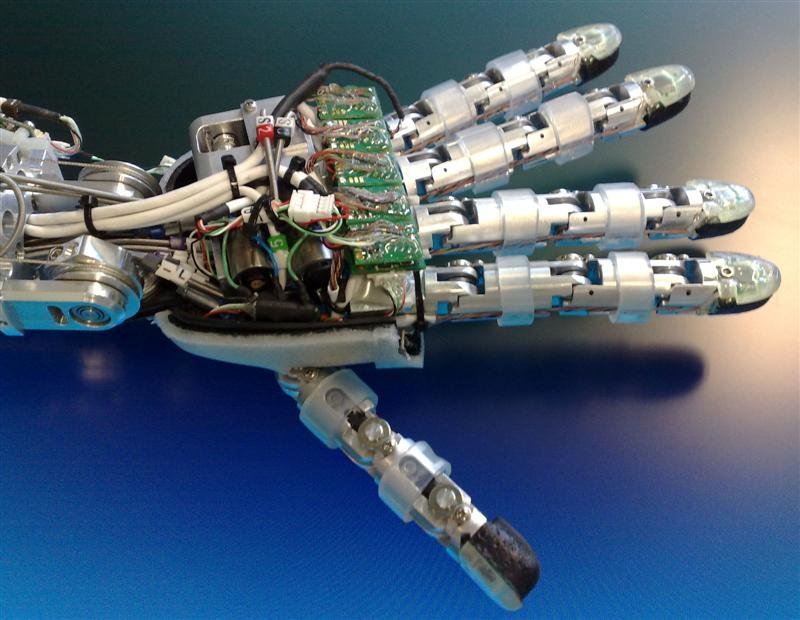
Significance of Strain Gauge Sensors in Robotics:
- Precision Measurement and Control:
Strain gauge sensors provide robots with precision measurement and control capabilities, enabling them to sense and respond to mechanical forces, pressures, and deformations with unparalleled accuracy. By integrating strain gauges into robotic systems and components, robots can perform tasks with precision, reliability, and repeatability, driving innovation and advancement in robotics technology.
- Enhanced Perception and Interaction:
Strain gauge sensors enhance the perception and interaction capabilities of robots, enabling them to perceive tactile information and interact with objects or the environment in a natural and intuitive manner. By sensing forces and pressures during interaction, robots can adjust their behavior, provide haptic feedback, and ensure safe and effective interaction with humans and the surrounding environment.
- Safety and Reliability:
Strain gauge sensors enhance the safety and reliability of robotic systems by enabling real-time monitoring of mechanical stresses and strains experienced during operation. By detecting anomalies or overloads, sensors can trigger safety mechanisms, perform diagnostics, and prevent catastrophic failures, ensuring the safety of robots and their surroundings in various applications.
- Versatility and Adaptability:
Strain gauge sensors offer versatility and adaptability, allowing integration into various robotic systems and components for diverse applications. From force sensing and load measurement to tactile sensing and object recognition, strain gauge sensors can be customized and tailored to meet the specific requirements of different robotics applications, enabling robots to perform tasks with flexibility and efficiency.
- Advancement of Robotics Technology:
Strain gauge sensors drive innovation and advancement in robotics technology by enabling new capabilities and functionalities. From dexterous manipulation and tactile interaction to biomechanical studies and human-robot interaction, strain gauge sensors play a pivotal role in shaping the future of robotics, enabling robots to perceive, interact, and collaborate with humans and the environment in novel and transformative ways.
In conclusion, strain gauge sensors stand as indispensable components in the realm of robotics, providing robots with the invaluable ability to sense and respond to mechanical forces, pressures, and deformations with precision and accuracy. From force sensing and tactile interaction to load measurement and structural health monitoring, strain gauge sensors play a pivotal role in shaping the landscape of robotics, enabling robots to perform tasks with finesse, reliability, and versatility. As robotics technology continues to advance and evolve, the significance
strain gauge sensors in robotics applications will only continue to grow, driving innovation, enabling new capabilities, and revolutionizing industries across the globe.
- Piezoelectric Sensors:
Piezoelectric sensors utilize the piezoelectric effect to convert mechanical stress or pressure into electrical signals. These sensors contain piezoelectric materials such as quartz crystals or ceramics that generate electric charge in response to mechanical deformation. By measuring the generated voltage or current, piezoelectric sensors can detect and quantify forces, pressures, or vibrations with high sensitivity and accuracy. Piezoelectric sensors are commonly used in robotics for applications such as force sensing, impact detection, and vibration monitoring.
Piezoelectric Sensors in Robotics: Unveiling the Power of Mechanical Energy Conversion
In the dynamic world of robotics, where precision and responsiveness are essential, piezoelectric sensors emerge as the silent marvels, harnessing the power of mechanical energy conversion to provide invaluable feedback and control mechanisms. These sensors, utilizing the piezoelectric effect, transform mechanical forces, pressures, and vibrations into electrical signals, enabling robots to perceive, react, and adapt to their surroundings with unparalleled sensitivity and accuracy. Join us on an immersive journey through the realm of piezoelectric sensors, exploring their principles, applications, and transformative role in shaping the landscape of robotics.
Principles of Piezoelectric Sensors:
Piezoelectric sensors operate on the principle of the piezoelectric effect, where certain materials exhibit the ability to generate electric charge in response to mechanical deformation. This phenomenon occurs in materials such as crystals, ceramics, and polymers with asymmetric crystal structures. When subjected to mechanical stress or pressure, these materials undergo deformation, causing a displacement of positive and negative charges within the crystal lattice, thus generating an electric potential across the material.
By attaching electrodes to the surface of the piezoelectric material, the generated electric charge can be collected and measured as an electrical signal. The magnitude of the electric signal is directly proportional to the applied mechanical force, pressure, or vibration, enabling precise measurement and detection of mechanical stimuli. Piezoelectric sensors can operate in both sensing and actuating modes, providing robots with the ability to sense and respond to mechanical forces or generate mechanical vibrations in response to electrical signals.

Types of Piezoelectric Sensors:
- Piezoelectric Crystals:
Piezoelectric crystals, such as quartz, Rochelle salt, and tourmaline, exhibit strong piezoelectric properties and are commonly used in piezoelectric sensors. These crystals can generate significant electric charge in response to mechanical deformation, making them suitable for high-sensitivity sensing applications. Piezoelectric crystals are used in robotics for tasks such as force sensing, pressure measurement, and vibration analysis.
- Piezoelectric Ceramics:
Piezoelectric ceramics, such as lead zirconate titanate (PZT) and barium titanate, are widely used in piezoelectric sensors due to their high piezoelectric coefficients and mechanical strength. These ceramics can generate electric charge under mechanical stress or pressure, allowing precise measurement of forces, pressures, or vibrations. Piezoelectric ceramics are used in robotics for applications such as ultrasonic sensing, acoustic emission detection, and energy harvesting.
- Piezoelectric Polymers:
Piezoelectric polymers, such as polyvinylidene fluoride (PVDF) and its copolymers, exhibit piezoelectric properties when subjected to mechanical deformation. These polymers can generate electric charge in response to bending, stretching, or compression, making them suitable for flexible and conformable sensor applications. Piezoelectric polymers are used in robotics for tasks such as tactile sensing, strain measurement, and biomedical sensing.
- Piezoelectric Composites:
Piezoelectric composites combine piezoelectric materials with other materials, such as polymers or ceramics, to enhance their mechanical properties and piezoelectric response. These composites offer advantages such as flexibility, durability, and tunable properties, making them suitable for diverse sensing and actuation applications. Piezoelectric composites are used in robotics for tasks such as energy harvesting, structural health monitoring, and adaptive vibration control.
Applications of Piezoelectric Sensors in Robotics:
- Force Sensing and Feedback Control:
Piezoelectric sensors enable robots to sense and measure mechanical forces exerted during interaction with objects or the environment. By integrating piezoelectric sensors into robotic grippers, manipulators, or end-effectors, robots can adjust their grasp force, monitor object slippage, and ensure precise manipulation and handling of objects with varying shapes, sizes, and surface properties. Force sensing and feedback control functionalities are crucial for tasks such as pick-and-place, assembly, and material handling in robotics applications.
- Vibration Monitoring and Analysis:
Piezoelectric sensors are used in robotics for vibration monitoring and analysis of mechanical systems and structures. By attaching piezoelectric sensors to robotic components or structures, robots can detect and measure mechanical vibrations induced by motion, friction, or external disturbances. Vibration monitoring and analysis functionalities are essential for tasks such as condition monitoring, fault detection, and predictive maintenance in robotics applications.
- Ultrasonic Sensing and Imaging:
Piezoelectric sensors enable robots to perform ultrasonic sensing and imaging of objects or surfaces in the environment. By generating and detecting ultrasonic waves using piezoelectric transducers, robots can measure distances, detect obstacles, and create detailed images of the surroundings. Ultrasonic sensing and imaging functionalities are crucial for tasks such as object detection, navigation, and obstacle avoidance in robotics applications.
- Acoustic Emission Detection:
Piezoelectric sensors are used in robotics for acoustic emission detection and monitoring of structural integrity and health. By attaching piezoelectric sensors to robotic components or structures, robots can detect and analyze acoustic emissions generated by mechanical stress, cracks, or defects. Acoustic emission detection functionalities are essential for tasks such as structural health monitoring, non-destructive testing, and quality control in robotics applications.

Significance of Piezoelectric Sensors in Robotics:
- High Sensitivity and Accuracy:
Piezoelectric sensors provide robots with high sensitivity and accuracy in sensing mechanical forces, pressures, and vibrations. By converting mechanical stimuli into electrical signals with precision, piezoelectric sensors enable robots to perceive and respond to subtle changes in the environment or interactions with objects with unparalleled sensitivity, driving innovation and advancement in robotics technology.
- Compact and Lightweight Design:
Piezoelectric sensors offer a compact and lightweight design, making them suitable for integration into robotic systems and components with limited space and weight constraints. By leveraging the small form factor and low mass of piezoelectric sensors, robots can achieve high-performance sensing and actuation capabilities without compromising mobility or agility, enabling versatile and adaptable robotic solutions for various applications.
- Wide Range of Applications:
Piezoelectric sensors find applications across a wide range of robotics domains, including force sensing, vibration monitoring, ultrasonic imaging, and acoustic emission detection. From industrial automation and manufacturing to healthcare and aerospace, piezoelectric sensors play a pivotal role in enhancing the perception, control, and interaction capabilities of robots in diverse applications, driving innovation and advancement in robotics technology.
- Energy Harvesting and Self-Powering:
Piezoelectric sensors can also act as energy harvesters, converting mechanical vibrations or deformations into electrical energy for powering robotic systems or sensors. By integrating piezoelectric energy harvesters into robotic components or structures, robots can generate self-sustaining power from ambient mechanical sources, reducing the reliance on external power sources and enhancing autonomy and reliability in robotics applications.
- Advancement of Robotics Technology:
Piezoelectric sensors drive innovation and advancement in robotics technology by enabling new capabilities and functionalities. From high-sensitivity sensing and precision control to energy harvesting and self-powering, piezoelectric sensors play a
pivotal role in shaping the future of robotics, enabling robots to perceive, interact, and adapt to their surroundings with unprecedented sensitivity and efficiency.
In conclusion, piezoelectric sensors stand as indispensable components in the realm of robotics, providing robots with the invaluable ability to sense and respond to mechanical forces, pressures, and vibrations with precision and sensitivity. From force sensing and vibration monitoring to ultrasonic imaging and acoustic emission detection, piezoelectric sensors play a pivotal role in enhancing the perception, control, and interaction capabilities of robots in diverse applications. As robotics technology continues to advance and evolve, the significance of piezoelectric sensors in robotics applications will only continue to grow, driving innovation, enabling new capabilities, and revolutionizing industries across the globe.
- Force-Sensitive Resistors (FSRs):
Force-sensitive resistors are thin, flexible sensors whose resistance changes in response to applied force or pressure. These sensors consist of a conductive polymer material sandwiched between two electrodes. When pressure is applied to the sensor, the conductive particles within the polymer material come into closer contact, resulting in a decrease in resistance. By measuring the resistance change, force-sensitive resistors can detect and quantify forces or pressures exerted on their surface. FSRs are widely used in robotics for applications such as human-robot interaction, touch sensing, and object manipulation.
- Optical Force Sensors:
Optical force sensors utilize optical principles to measure changes in force or pressure. These sensors typically employ fiber optic cables or optical fibers embedded within a flexible material. When subjected to mechanical force, the deformation of the material alters the propagation of light through the fibers, resulting in changes in light intensity or phase. By analyzing the optical signals, optical force sensors can accurately measure forces, pressures, or deformations with high sensitivity and resolution. Optical force sensors are used in robotics for applications such as tactile sensing, soft robotics, and biomechanical studies.
- Tactile Array Sensors:
Tactile array sensors consist of an array of individual tactile sensing elements distributed over a surface. Each sensing element is capable of detecting local forces, pressures, or contact points independently. By integrating multiple tactile sensing elements into an array, tactile array sensors can provide spatially resolved tactile information, enabling robots to perceive the shape, texture, and compliance of objects in contact. Tactile array sensors are essential for tasks such as object manipulation, grasping, and haptic feedback in robotics applications.
Functionalities of Force and Tactile Sensors:
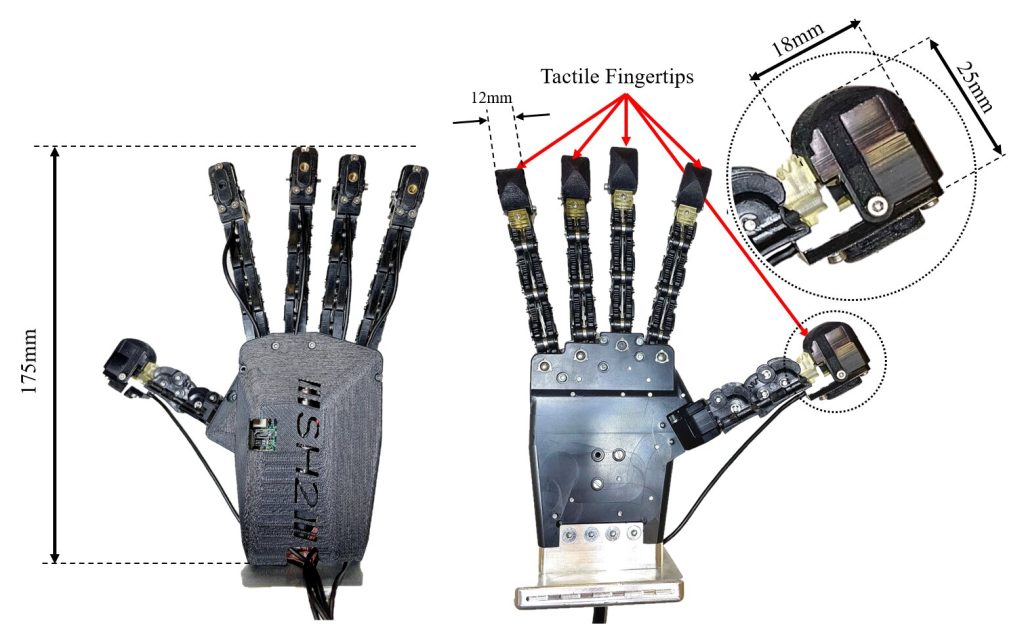
- Object Grasping and Manipulation:
Force and tactile sensors enable robots to grasp and manipulate objects with precision and dexterity. By sensing the forces and pressures exerted on robotic grippers or manipulators during interaction with objects, sensors enable robots to adjust their grasp force, monitor object slippage, and ensure secure handling of objects with varying shapes, sizes, and surface properties.
- Surface Recognition and Texture Discrimination:
Force and tactile sensors enable robots to recognize and discriminate between different surface textures and properties. By analyzing the distribution of forces and pressures applied to their tactile sensing elements, sensors can infer the texture, compliance, and roughness of objects in contact. Surface recognition and texture discrimination functionalities are crucial for tasks such as object inspection, quality control, and material characterization in robotics applications.
- Collision Detection and Safety:
Force and tactile sensors enable robots to detect and respond to collisions or unexpected contact with objects or obstacles in the environment. By monitoring the forces and pressures exerted on their surfaces, sensors can detect sudden changes indicative of collisions or impacts. Collision detection and safety functionalities are essential for ensuring the safety of robots and their surroundings in dynamic and cluttered environments.
- Haptic Feedback and Interaction:
Force and tactile sensors enable robots to provide haptic feedback and interact with humans or other robotic systems in a natural and intuitive manner. By sensing the forces and pressures applied during interaction, sensors can generate corresponding tactile feedback or responses, enhancing the realism and effectiveness of human-robot interaction. Haptic feedback and interaction functionalities are crucial for applications such as teleoperation, virtual reality, and collaborative robotics.
- Object Recognition and Shape Estimation:
Force and tactile sensors enable robots to recognize and estimate the shape, size, and compliance of objects based on tactile feedback. By analyzing the distribution of forces and pressures applied during contact with objects, sensors can infer their geometric properties and mechanical characteristics. Object recognition and shape estimation functionalities are essential for tasks such as object manipulation, assembly, and grasping in robotics applications.
Significance of Force and Tactile Sensors in Robotics:
- Enhanced Perception and Interaction:
Force and tactile sensors provide robots with enhanced perception and interaction capabilities, enabling them to interact with the environment and objects with precision and dexterity. By sensing forces, pressures, and contact points during interaction, sensors enable robots to perceive tactile information, adjust their behavior, and respond to changes in the environment dynamically.
- Dexterous Manipulation and Grasping:
Force and tactile sensors enable robots to perform dexterous manipulation and grasping of objects with varying shapes, sizes, and properties. By monitoring forces and pressures exerted on their grippers or manipulators, sensors enable robots to adapt their grasp force, manipulate objects delicately, and ensure secure handling without damaging or dropping objects.
- Safe and Reliable Operation:
Force and tactile sensors enhance the safety and reliability of robotic systems by enabling collision detection, object recognition, and safety monitoring. By detecting unexpected contacts, collisions, or slippage during operation, sensors enable robots to react promptly, avoid accidents, and ensure safe interaction with humans and the environment.
- Human-Robot Collaboration:
Force and tactile sensors facilitate human-robot collaboration by enabling robots to interact with humans in shared workspaces safely and effectively. By providing haptic feedback and tactile interaction, sensors enable robots to collaborate with humans on tasks such as assembly, manufacturing, and rehabilitation, enhancing productivity and efficiency in collaborative robotics applications.
- Advanced Robotics Applications:
Force and tactile sensors enable robots to perform advanced tasks and applications that require precise interaction with the environment and objects. From delicate manipulation and grasping to tactile feedback and interaction, sensors are integral components of robotics systems across various domains. By providing robots with the sense of touch, sensors enable them to perform complex tasks with precision and accuracy, driving innovation and advancement in robotics technology.
In conclusion, force and tactile sensors stand as indispensable components in the realm of robotics, providing robots with the invaluable sense of touch essential for interaction with the environment and objects. From object manipulation and grasping to collision detection and safety monitoring, force and
Tactile sensors play a pivotal role in shaping the future of robotics, enabling robots to perceive and respond to physical forces and pressures with precision and accuracy. As robotics technology continues to advance and evolve, the significance of force and tactile sensors in robotics applications will only continue to grow, driving innovation, enabling new capabilities, and revolutionizing industries across the globe.


